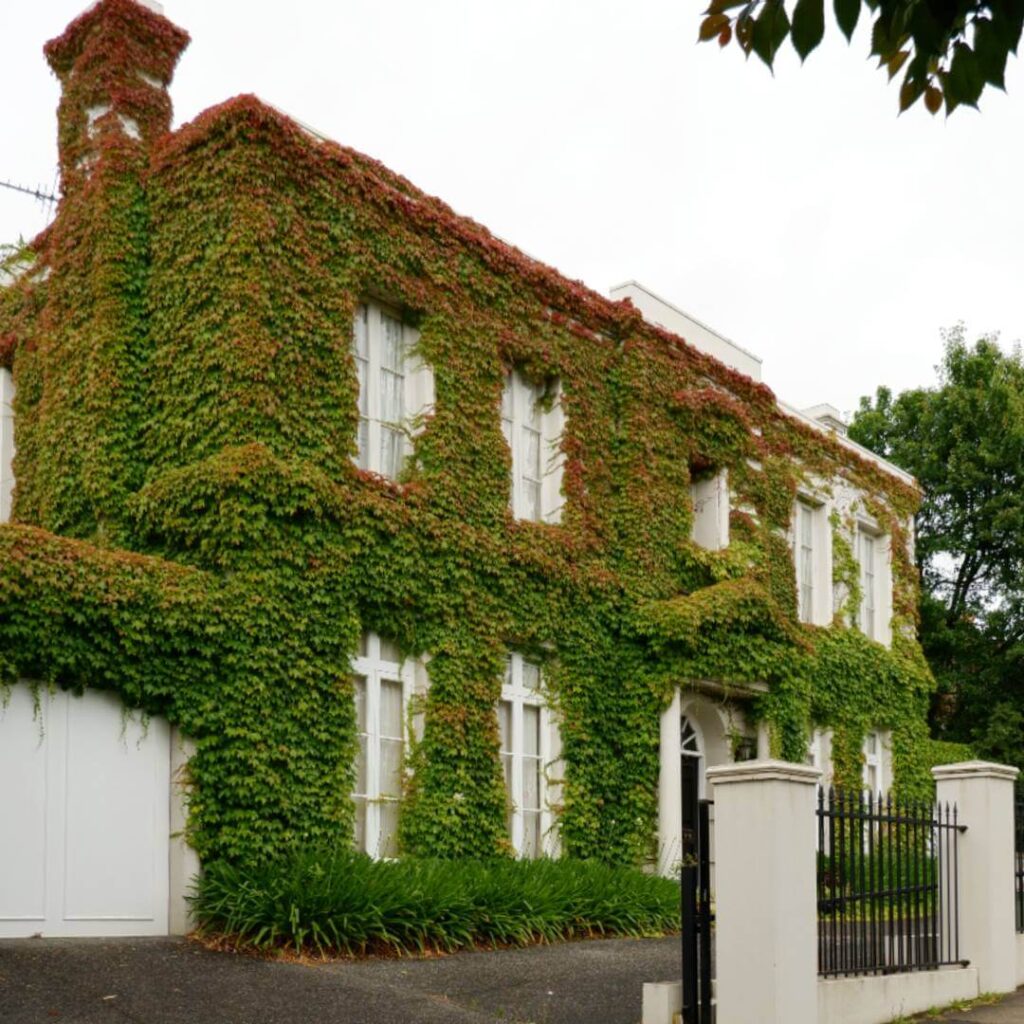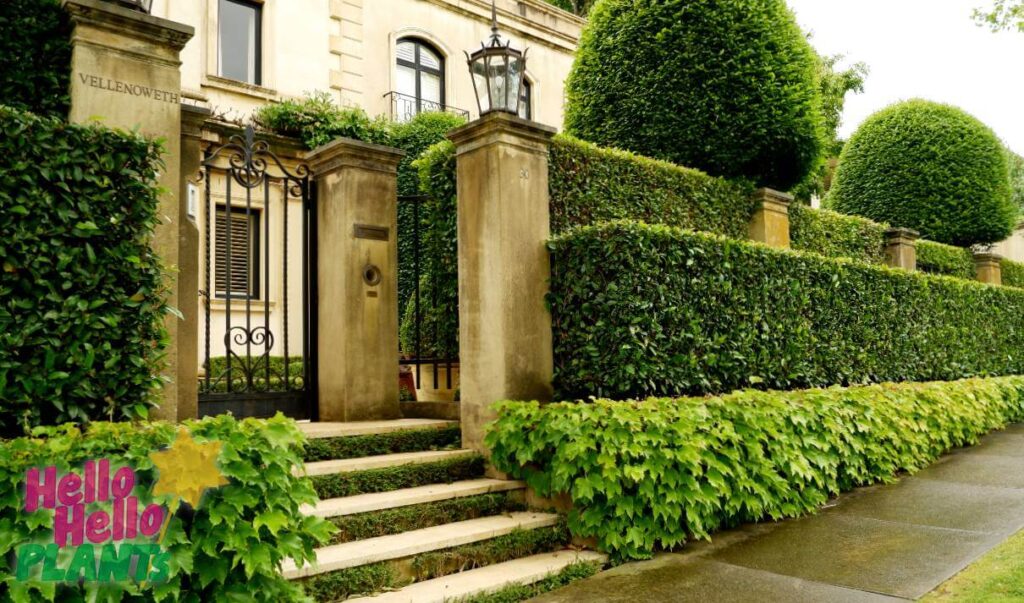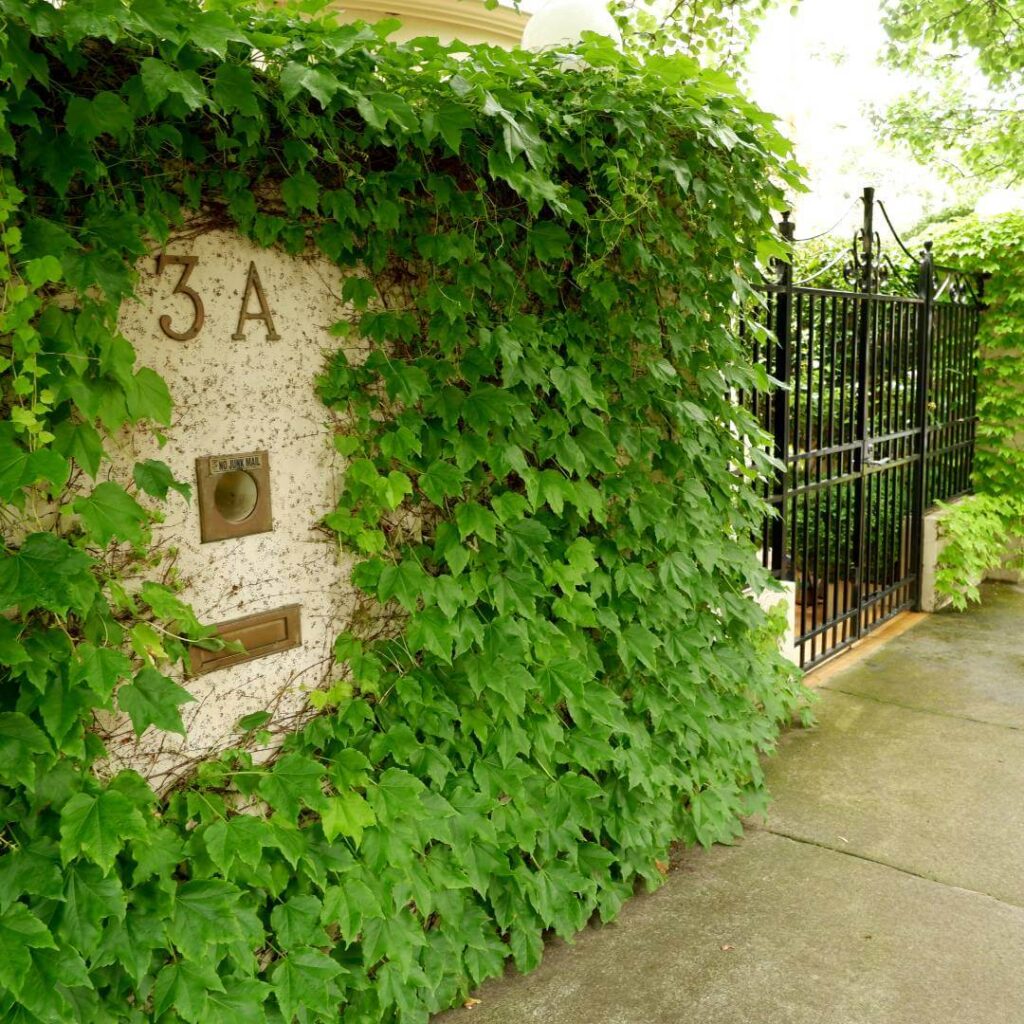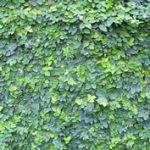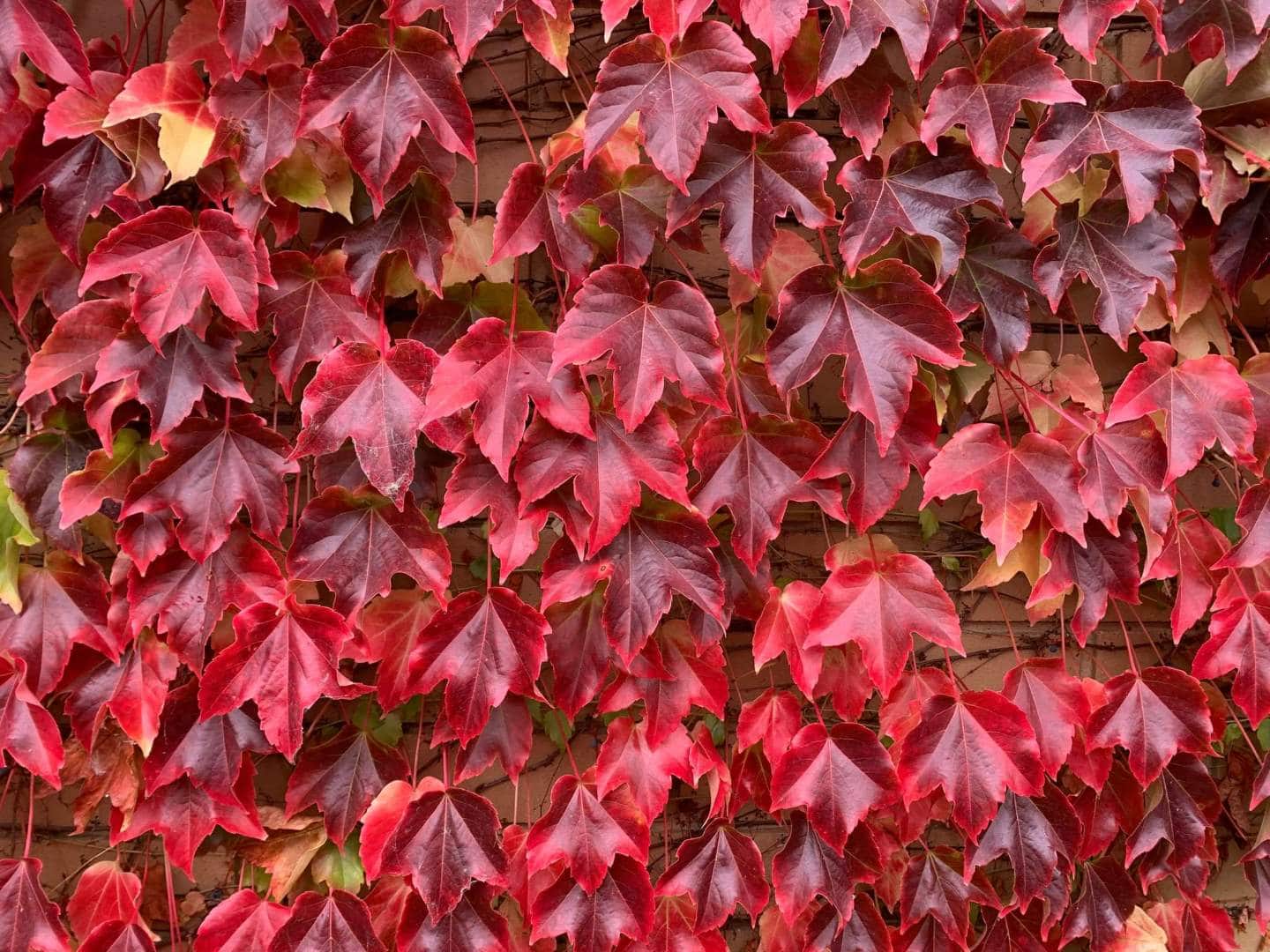
Boston Ivy in architecture and landscaping
What is Boston Ivy?
Boston Ivy has large glossy 3 pointed leaves and it adheres to walls and fences. It is probably one of the most aesthetically pleasing ways of covering walls and fences as it covers the surface evenly. Boston Ivy has spectacular brilliant red foliage in autumn before going deciduous in winter.
Is Boston Ivy a form of ivy?
Boston ivy is closely related to the Parthenocissus or grape family and is in no way an actual ivy.
“Once I was involved in the restoration of a heritage building and when liaising with a project manager on the gardens, he asked me whether growing Boston Ivy on the façade would damage the building. I told him that because Boston Ivy attaches itself to surfaces using little pads instead of penetrating the wall with roots, it will do no structural damage to the building. 12 years later I am still involved with the same project and the Boston Ivy has flourished, really enhancing the beautiful restored building without damaging the brickwork and woodwork.” – Chris Lucas
For more on Parthenocissus – Ornamental Grape check out our Fact sheet here!
Boston Ivy Loves
Boston Ivy loves a hot sunny spot with loose fertile soil and plenty of water. Given these it will cover anything in no time.
However, Boston Ivy is a very hardy and versatile plant and it can grow almost anywhere and under any conditions. If the conditions are more adverse, plant more densely and expect it to grow more slowly. Boston Ivy can grow in shade, in pots, in poor soils and confined garden beds. Plant one plant every metre.
Layering
Layering is where various trees, shrubs, hedges and groundcovers are planted at different intervals so as each subsequent layer can be seen and admired. Each layer usually highlights those before and after it by either colour, shape or texture. Boston Ivy is often used as a green wall layer, covering a fence, arbour or building.
For more on layering, check out our garden advice page Layered Gardens – A Landscape Technique
Here is a fabulous example I photographed in Toorak. At the start you have Chinese Star Jasmine rising to Korean Box hedge then Boston Ivy over the fence, the Ficus ‘Flash’ rising above the fence with the brilliant use of Boston Ivy in this combination. 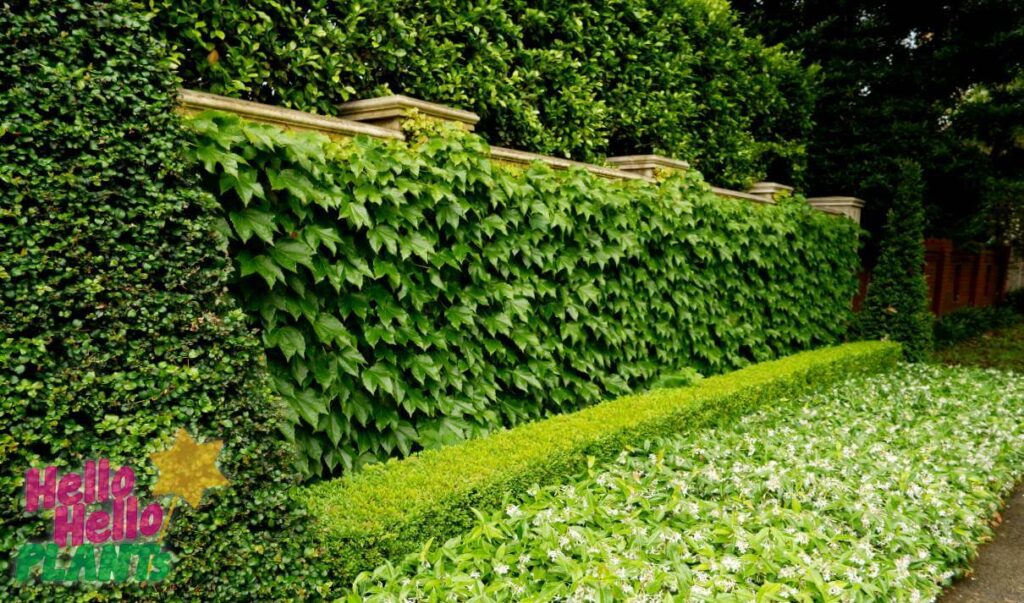
(a lovely Spacious layered look is achieved within a long but rather narrow area)
Architecture
In a confined area that has too much paving masonry and fences Boston Ivy can be used to cover one or more panels or fences.
You can choose one wall or panel and grow Boston Ivy over it, clip it neatly to the edges of the wall thereby confining it to that wall, panel or fence section. This will provide living breathing green relief and additionally create a real feature.
As Boston Ivy attaches itself to the wall you can create sculptural shapes or pillars and beams creating an exciting feature. To dress up an otherwise plain building, such as the entrance of Dan Murphy’s Moonee Ponds has a series of concrete columns with a steel beam connecting the columns. Boston Ivy is planted at the edge of each column and the effect is a wonderful; a feature that really dresses up the building.
“I visited a winery in Tasmania where a large old tin farm shed had a glass & timber façade on the front. All the other walls were Boston Ivy and very quickly an old farm shed had been turned into a wine sales area. ” – Chris Lucas
Boston Ivy’s self clinging nature could be used to cover sculptures, ugly sheds, walls, fences and masonry. There is unlimited architectural scope to be explored with planting Boston Ivy.
Boston Ivy belongs to a special category of climbers that are self adhering. Some climbers, such as the Hardenbergia or Chinese Star Jasmine require a trellis or framework to wind their tendrils over and to have support their weight. Boston Ivy, amongst others, attach themselves to any surface, including tin, wood, brick, concrete and stone. They require no framework using either small pads or roots to attach themselves to the surface. In most cases they will cover the surface evenly, with no unsightly large bulges.
Here is a quick summary of the main alternatives to Boston Ivy and how they compare.
Ficus pumila – Climbing Fig
This climber is evergreen meaning it keeps its leaves all year round and takes a little longer to cover the wall. If kept neatly trimmed flat to the wall it keeps very fine, beautiful foliage and can be kept at a thickness of 4-8 cm thick on the wall. This plant is a great choice where space is at a premium as Boston Ivy will be around 25 -30cm thick over the wall.
Ficus pumila grows best in hot sun but also does well in shade.
Hedera – English Ivy/Pittsburgh Ivy
Hedera English Ivy and Pittsburgh Ivy form a thick, luscious and fast growing cover over most surfaces. They need to be trimmed to be contained and has a classic look. Hedera Ivy is fast and easy to grow in sun or shade.
Pittsburgh has finer dense foliage and is a less aggressive grower than the English variety.
English Ivy has a slightly larger leaf than Pittsburgh and is very fast growing if clipped and maintained and can be used to cover instantly over fences and walls.
For more on Hedera Ivy’s, check out our Hedera – Ivy Fact sheet!
Hedera – Canary Island Ivy
 This is a large leaf ivy that has a lovely dappled two tone green effect where the old foliage is a rich deep green and the new foliage is a soft bright green. It is popular for making ivy lawns and thrives in sun or shade. I have found it useful for covering earth and rock embankments as it is evergreen and roots into the ground as it grows.
This is a large leaf ivy that has a lovely dappled two tone green effect where the old foliage is a rich deep green and the new foliage is a soft bright green. It is popular for making ivy lawns and thrives in sun or shade. I have found it useful for covering earth and rock embankments as it is evergreen and roots into the ground as it grows.
Parthenocissus – Virginia Creeper
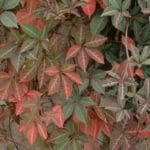 Virginia Creeper is also in the Parthenocissus or grape family. From a distance it looks like a Boston Ivy but looking closer you will see the foliage is not as glossy, has more points and it doesn’t stick as tightly to the wall. The foliage looks looser with divided leaves as opposed to the three pointed leaves that Boston Ivy has. The advantage that Virginia Creeper has is that it grows very quickly in almost any conditions plus it is one of the first to have change colour in the autumn! Even if neglected it is surprisingly fast and hardy.
Virginia Creeper is also in the Parthenocissus or grape family. From a distance it looks like a Boston Ivy but looking closer you will see the foliage is not as glossy, has more points and it doesn’t stick as tightly to the wall. The foliage looks looser with divided leaves as opposed to the three pointed leaves that Boston Ivy has. The advantage that Virginia Creeper has is that it grows very quickly in almost any conditions plus it is one of the first to have change colour in the autumn! Even if neglected it is surprisingly fast and hardy.




